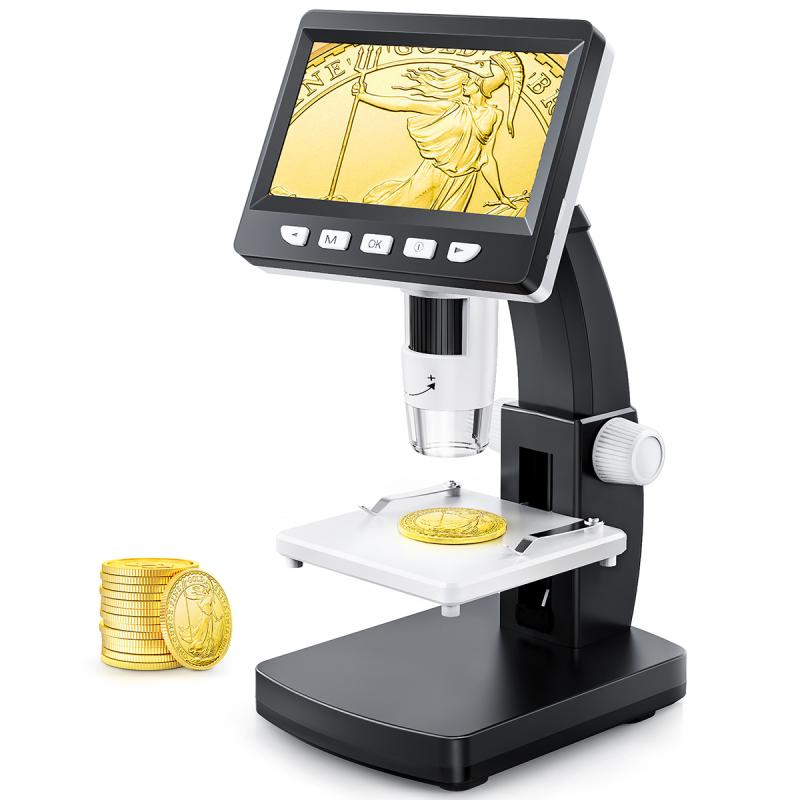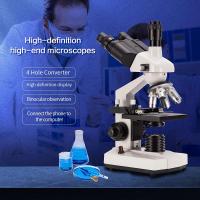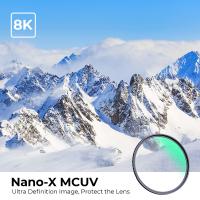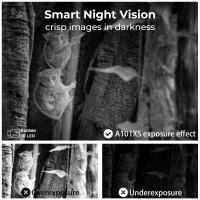What Is Microscope Resolving Power ?
Microscope resolving power refers to the ability of a microscope to distinguish two closely spaced objects as separate entities. It is a measure of the microscope's ability to reveal fine details and resolve fine structures in a specimen. Resolving power is determined by the numerical aperture of the microscope's objective lens and the wavelength of light used for illumination. A higher numerical aperture and shorter wavelength of light result in better resolving power. Resolving power is an important factor in microscopy as it determines the level of detail that can be observed and studied in a specimen.
1、 Numerical aperture and resolving power relationship in microscopy.
The resolving power of a microscope refers to its ability to distinguish two closely spaced objects as separate entities. It is a crucial parameter in microscopy as it determines the level of detail that can be observed and resolved in a specimen. The resolving power is influenced by several factors, including the numerical aperture (NA) of the microscope.
Numerical aperture is a measure of the light-gathering ability of an optical system, such as a microscope objective. It is determined by the refractive index of the medium between the specimen and the objective lens, as well as the angle of the cone of light entering the lens. A higher numerical aperture corresponds to a larger cone of light and therefore a higher resolving power.
The relationship between numerical aperture and resolving power in microscopy is well-established. According to the Abbe formula, the resolving power (R) is given by the equation R = 0.61λ/NA, where λ is the wavelength of light used. This formula indicates that the resolving power is directly proportional to the wavelength of light and inversely proportional to the numerical aperture.
In recent years, there have been advancements in microscopy techniques that have pushed the limits of resolving power even further. Super-resolution microscopy techniques, such as stimulated emission depletion (STED) microscopy and structured illumination microscopy (SIM), have overcome the diffraction limit of light and achieved resolutions beyond what was previously thought possible. These techniques utilize various principles, such as the manipulation of fluorescent molecules or the interference of light patterns, to enhance the resolving power.
In conclusion, the resolving power of a microscope is determined by its numerical aperture, with a higher numerical aperture resulting in a higher resolving power. However, recent advancements in super-resolution microscopy techniques have expanded the possibilities of achieving even higher resolutions, surpassing the traditional limits set by the numerical aperture.

2、 Factors influencing the resolving power of a microscope.
The resolving power of a microscope refers to its ability to distinguish two closely spaced objects as separate entities. It is a crucial factor in determining the clarity and detail of the images produced by a microscope. The resolving power is typically measured in terms of the minimum distance between two points that can be resolved by the microscope.
Several factors influence the resolving power of a microscope. Firstly, the wavelength of the light used plays a significant role. According to the Abbe's formula, the resolving power is inversely proportional to the wavelength of light. Therefore, using shorter wavelengths of light, such as ultraviolet or blue light, can enhance the resolving power of a microscope. This is one reason why electron microscopes, which use electron beams instead of light, have much higher resolving power than optical microscopes.
Another factor is the numerical aperture (NA) of the microscope's objective lens. The NA is a measure of the lens's ability to gather light and resolve fine details. Higher NA values result in better resolving power. Advances in lens manufacturing techniques have allowed for the development of objectives with higher NA, leading to improved resolving power in modern microscopes.
Additionally, the quality of the lenses and the overall optical design of the microscope can impact resolving power. Any aberrations or imperfections in the lenses can degrade the image quality and reduce the resolving power. Therefore, high-quality lenses and precise optical alignment are essential for maximizing resolving power.
In recent years, advancements in microscopy techniques have pushed the boundaries of resolving power even further. Super-resolution microscopy techniques, such as stimulated emission depletion (STED) microscopy and structured illumination microscopy (SIM), have overcome the diffraction limit of light and achieved resolutions beyond what was previously thought possible. These techniques utilize clever strategies to manipulate the emitted light and extract more detailed information from the sample.
In conclusion, the resolving power of a microscope is influenced by factors such as the wavelength of light, numerical aperture, lens quality, and optical design. Ongoing advancements in microscopy techniques continue to push the limits of resolving power, enabling scientists to explore the microscopic world with unprecedented detail and clarity.

3、 Abbe's formula for calculating microscope resolving power.
Microscope resolving power refers to the ability of a microscope to distinguish two closely spaced objects as separate entities. It is a crucial parameter in microscopy as it determines the level of detail that can be observed and the clarity of the image produced. Resolving power is influenced by various factors, including the wavelength of light used, the numerical aperture of the lens, and the quality of the optics.
Abbe's formula for calculating microscope resolving power, developed by Ernst Abbe in the late 19th century, is a widely used method to estimate the resolving power of a microscope. The formula is given as:
Resolving power = (0.61 x λ) / NA
Where λ represents the wavelength of light used and NA represents the numerical aperture of the lens. This formula suggests that shorter wavelengths and higher numerical apertures result in better resolving power.
However, it is important to note that Abbe's formula has its limitations. It assumes that the microscope is operating under ideal conditions and that the lens is perfectly corrected for aberrations. In reality, various factors such as lens imperfections, diffraction, and scattering of light can affect the resolving power.
In recent years, advancements in microscopy techniques have pushed the limits of resolving power beyond what was previously thought possible. Techniques such as super-resolution microscopy, which utilize fluorescent probes and clever imaging algorithms, have allowed researchers to achieve resolutions beyond the diffraction limit of light. These techniques have revolutionized the field of microscopy, enabling the visualization of structures at the nanoscale.
In conclusion, while Abbe's formula provides a useful estimation of microscope resolving power, it is important to consider the latest advancements in microscopy techniques that have expanded the boundaries of resolution. These advancements have opened up new possibilities for studying biological and physical phenomena at unprecedented levels of detail.

4、 The impact of wavelength on microscope resolving power.
Microscope resolving power refers to the ability of a microscope to distinguish between two closely spaced objects as separate entities. It is a measure of the microscope's ability to provide clear and detailed images by resolving fine details of the specimen being observed. The resolving power of a microscope is determined by several factors, including the numerical aperture of the lens system and the wavelength of light used.
The impact of wavelength on microscope resolving power is significant. According to the Abbe diffraction limit, the resolving power of a microscope is inversely proportional to the wavelength of light used. This means that shorter wavelengths of light, such as those in the ultraviolet range, provide higher resolving power compared to longer wavelengths, such as those in the visible or infrared range.
Advancements in technology have allowed for the development of microscopes that utilize shorter wavelengths of light, such as electron microscopes and X-ray microscopes. These instruments have significantly higher resolving power compared to traditional light microscopes. Electron microscopes, for example, use a beam of electrons instead of light, which has a much shorter wavelength, enabling them to achieve much higher resolving power.
In recent years, there has been a growing interest in the development of super-resolution microscopy techniques. These techniques go beyond the diffraction limit and allow for the visualization of structures at the nanoscale. Super-resolution microscopy techniques, such as stimulated emission depletion (STED) microscopy and single-molecule localization microscopy (SMLM), have revolutionized the field of microscopy by providing unprecedented resolution and enabling the study of biological processes at the molecular level.
In conclusion, the impact of wavelength on microscope resolving power is crucial. Shorter wavelengths of light provide higher resolving power, allowing for the visualization of finer details in the specimen being observed. Advancements in technology, such as electron microscopy and super-resolution microscopy, have further pushed the boundaries of resolving power, enabling scientists to explore the microscopic world with greater clarity and precision.








































